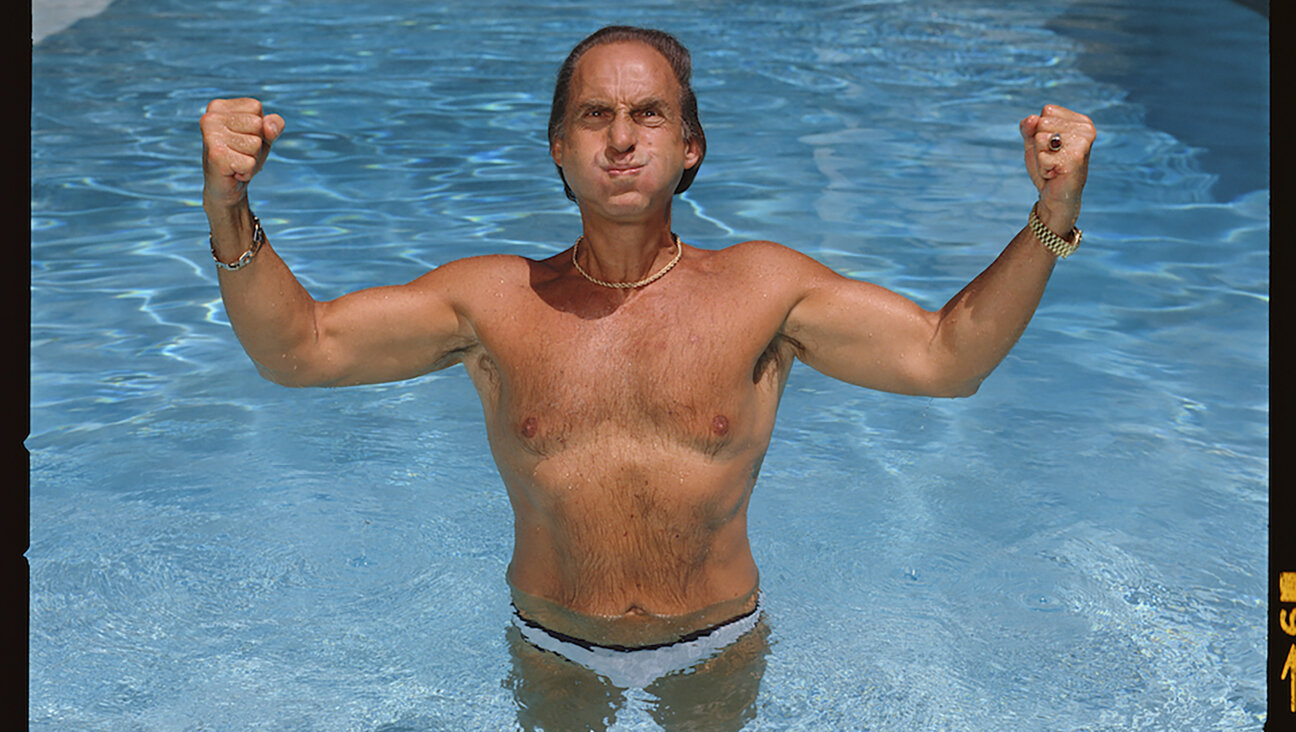How Neil Diamond wrote his best song and worst album — and why it’s all Lenny Bruce’s fault

Neil Diamond By Getty Images
“Stones,” Neil Diamond’s seventh studio album, celebrates its 50th anniversary on Nov. 5. It was a pretty big success in its day, reaching #11 on the Billboard 200, selling over 500,000 copies, and containing two Top 20 hits — one of which, “I Am… I Said,” may be the greatest song Diamond ever wrote.
And yet, I’ll wager that you haven’t seen or heard Stones listed anywhere in this year’s flood of articles and retrospectives about the wealth of incredible music that was released in 1971, and for good reason: “Stones” is, quite frankly, a lousy record. And it’s all (well, mostly) Lenny Bruce’s fault.
1970 was a banner year for Diamond. “Gold,” a live LP recorded that July at LA’s Troubadour nightclub, peaked at #10 on the Billboard 200 in September, giving the singer-songwriter his first-ever Top 10 album. One month later, Diamond achieved his first No. 1 when the jaunty “Cracklin’ Rose” topped the singles charts. “Tap Root Manuscript,” the single’s parent album, only reached #13 that fall, but it achieved something no Neil Diamond album had previously managed: for the first time in his career, he was being viewed as something more than just a singles artist, thanks to the record’s ambitious side-long suite “The African Trilogy (A Folk Ballet).”

Working Blue: Neil Diamond wanted to play Lenny Bruce in a biopic; the role eventually went to Dustin Hoffman. By gettyimages
Inspired by African music and Side 2 of the Beatles’ “Abbey Road,” the side’s seven tracks — artfully strung together by ace arranger Marty Paich — made music critics everywhere reconsider their commonly held perception of Diamond as a square Brill Building refugee who merely cranked out three-chord songs for the kids.
Even Rolling Stone, which had never held Diamond in anywhere near the same esteem as the prominent singer-songwriters of the day (Joni Mitchell, James Taylor, Carole King, etc.), grudgingly admitted that “The African Trilogy” was “quite charming” in its better parts.
“I haven’t any idea who would want to listen to it,” wrote RS reviewer Alec Dubro, “but then again the Moody Blues got rich off stuff that’s sillier than this. If somebody gives you a copy, listen to it, but I wouldn’t recommend blowing your dope money on it.”
In theory, the commercial success and critical reappraisal of 1970 should have teed up 1971 for Neil Diamond as the year in which he moved into “major artist” territory, if only he hadn’t taken his eye off the ball. The distraction came from the bright lights of Hollywood; like so many musicians, Neil didn’t just want to achieve success in the music world — he also wanted to act. He’d been talking about it for years, though thus far he’d only managed to score an appearance in a 1967 episode of the TV detective show “Mannix.” And even that part wasn’t much of a stretch; he played himself, singing three songs in a coffeehouse, his only spoken line (“Hey, man — do you mind if I finish the set by myself?”) coming after a fight involving star Mike Connors interrupts his performance.
A 1968 screen test at Universal Studios likewise didn’t amount to much; producer Saul David, a friend of Diamond’s who arranged for the test, later recalled that “he was not as bad as I feared, or as good as I had hoped for.”
Still, Diamond was unable to shake the acting bug — and in 1970, when producer Marvin Worth approached him about possibly playing the late Lenny Bruce in a biopic about the controversial comedian, he jumped at the opportunity. In order to demonstrate his comic chops, Diamond booked the Bitter End West in West Hollywood and performed a full set of stand-up comedy for an appreciative audience that included Worth and Broadway director Tom O’Horgan, who was slated at the time to direct the Bruce film. (It’s a damn shame that no audio or video apparently survives from this engagement, especially since Neil was reportedly either doing Bruce’s actual material or working uncharacteristically blue in a Bruce-esque manner.)
The stand-up gig led to a screen test for the film, which was equally successful — Worth later recalled that he liked Diamond’s test better than any of the other ones they held for part. But Diamond was spooked by the experience; he was extremely uncomfortable with the love scene the producer and director asked him to do, and grew even more uncomfortable when Worth and O’Horgan made the mistake of introducing him to Sally Marr, Bruce’s mother, right before he performed one of Bruce’s monologues.
“Meeting this woman before going in front of the cameras to portray her son, her dead son… it broke my concentration completely,” Diamond recalled onstage in 1971. “I felt for what she would be going through watching me speak her son’s words. It just freaked me out.”
Depressed and absolutely certain that he’d blown the audition, Diamond locked himself in the dressing room. He spent several hours strumming his guitar and ruminating on both Bruce’s words and his own insecurities, as well as the unexpected twists and turns in his own life that had led to this moment. When Diamond emerged later that day from his self-imposed seclusion, he’d already come up with the beginnings of what would turn out to be one of his most powerful and best-loved songs: “I Am… I Said.”
Released in March 1971, “I Am… I Said” was an international smash (it reached #4 on the Billboard singles chart, and hit the Top 10 in 10 other countries, including the UK and Germany), as well as one of the most nakedly personal things Diamond ever wrote. It also quickly became a popular punching bag for Diamond critics, both for its over-the-top angst and for its expression of disappointment that “not even the chair” would listen to his self-actualizing cries.
But if you can get past both of those obstacles, the song is actually quite moving in its honesty. The line “LA’s fine but it ain’t home/New York’s home but it ain’t mine no more” perfectly captures the sense of emotional dislocation that plagued Diamond (and countless other native New Yorkers before and since) after forsaking the city of bagels and brownstones for a more comfortable existence beneath the swaying palm trees of Los Angeles — but it can resonate with anyone who feels a similarly nagging sense of rootlessness, regardless of their origins or adoptive home.
The second verse begins with the line, “Did you ever read of the frog that dreamed of being a king/And then became one?” — which, however clumsy an allusion it may be to the fairy tale “The Frog Prince,” has often been singled out by Diamond as the point where he knew he was on the right track with the song. Certainly, those lyrics recall the same shy, troubled, daydreaming boy who appeared in earlier Diamond songs like “Shilo” and “Brooklyn Roads”; his dreams have now all come true, but fame and fortune still haven’t diminished his sense of alienation and loneliness, and have maybe even intensified them.
The lines “I’m not a man who likes to swear/But I’ve never cared for the sound of being alone” may well refer to Diamond’s discomfiting brush with the Lenny Bruce role; it’s easy to imagine that he felt lonelier in front of a camera than he ever did onstage. In the end, all Diamond can do is take comfort in the basic fact of his own existence, shouting “I Am!” to the sky or into the void or at the chair over in the corner. And hey, we’ve all been there at some point, right?
“I Am… I Said” garnered Diamond his first Grammy nomination — for Best Pop Vocal Performance, Male — and when “Stones” was released in November 1971, it served as both the album’s opener and (in a truncated reprise) its closer. Unfortunately, nothing else on the album matched the song’s incisive introspection or the power of Diamond’s performance. Distracted by the Bruce role and the possibility of a film career, Diamond hadn’t found much time to write new material outside of “I Am… I Said.” (Though his second audition for the film was more successful than his first, and Marvin Worth purportedly offered him the role, Diamond either turned down the gig or the suits at United Artists didn’t think Diamond was sufficiently bankable for the project. Ultimately, the role of Lenny Bruce would go to Dustin Hoffman; when the film “Lenny” was finally released in 1974, it was directed by Bob Fosse instead of Tom O’Horgan, and utilized a much different treatment than the version Diamond auditioned for.)
With little in the way of new material on hand, and record company pressure mounting for a timely follow-up to “Tap Root Manuscript,” Diamond and longtime producer Tom Catalano opted to make an album filled primarily with songs by other artists. Though Diamond had recorded numerous cover songs in the past, he was hardly known as a gifted interpreter of other people’s material — the braying version of Ritchie Valens’ “La Bamba” he recorded for 1966’s “The Feel of Neil Diamond” would have probably gotten him knifed in East LA — and nothing he waxed for “Stones” would change that perception.
Nor did it help that the songs they chose weren’t especially suited to Diamond’s strengths as a singer, or that they all had already been covered (in some cases definitively) by other performers. Though Diamond turned in an agreeably earnest rendition of Tom Paxton’s “The Last Thing On My Mind” for the album, his versions of Roger Miller’s “Husbands And Wives,” Joni Mitchell’s “Chelsea Morning,” Jacques Brel and Rod McKuen’s “If You Go Away,” Leonard Cohen’s “Suzanne” and Randy Newman’s “I Think It’s Going to Rain Today” came off as dull and schmaltzy at best, and cringe-inducingly misguided at worst.
All of which left room on “Stones” for only two other Diamond originals, “Crunchy Granola Suite” and the title track. The former, a slight but charmingly upbeat strummer with considerable traces of “Cherry, Cherry” in its DNA, told the humorous tale of an uptight and reclusive loner (most likely Diamond himself) who finally found happiness after getting into health food. The latter, an unremarkable romantic ballad, somehow managed to reach #14 on the Billboard singles chart despite sounding almost comically unfinished; while Diamond had artfully employed nonsense syllables in the past, the song’s chorus of “La la la la la la la la la stones” simply made it sound like he’d run out of gas.
Fully focused on music again, Diamond thankfully reconnected with his muse in time for 1972’s “Moods,” which contained all original material — including “Song Sung Blue,” his second No. 1 hit, and the seductive crooning of “Play Me,” which sounds like a more fully-realized attempt at what he was trying to do with the song “Stones.”
Though “Stones” the album was certainly considered a commercial success at the time (Diamond was awarded a gold record for it in early 1972), it’s telling that it didn’t have much legs beyond its initial release; the albums released on either side of it — “Tap Root Manuscript” and “Moods” — have both sold over a million copies, while “Stones” has yet to even approach the platinum mark.
It’s rather also telling that, to this day, “Stones” is by far the easiest Neil Diamond album to find in thrift shops with its vinyl still in really good condition; once the thrill of spinning “I Am… I Said,” “Stones” and “Crunchy Granola Suite” wore off — or once fans realized that a superior version of the latter song could be heard on 1972’s “Hot August Night,” and the first two songs were included on the 1974 compilation “His 12 Greatest Hits” — it was clearly hard to justify the album’s place on their turntable, or even in their collection. Diamond fans have gotten a reputation over the years for being an uncritical lot, but even they knew a stinker when they heard one.
Dan Epstein is the Forward’s contributing music critic.

















